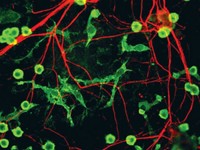Advertisement
Grab your lab coat. Let's get started
Welcome!
Welcome!
Create an account below to get 6 C&EN articles per month, receive newsletters and more - all free.
It seems this is your first time logging in online. Please enter the following information to continue.
As an ACS member you automatically get access to this site. All we need is few more details to create your reading experience.
Not you? Sign in with a different account.
Not you? Sign in with a different account.
ERROR 1
ERROR 1
ERROR 2
ERROR 2
ERROR 2
ERROR 2
ERROR 2
Password and Confirm password must match.
If you have an ACS member number, please enter it here so we can link this account to your membership. (optional)
ERROR 2
ACS values your privacy. By submitting your information, you are gaining access to C&EN and subscribing to our weekly newsletter. We use the information you provide to make your reading experience better, and we will never sell your data to third party members.
Neuroscience
Manganese exposure helps spread Parkinson’s disease protein
High levels of the heavy metal coax nerve cells to pump out exosomes that transmit the misfolded, pathogenic protein to other cells, study finds
by Megha Satyanarayana
March 18, 2019

For decades, doctors have reported that people exposed to high levels of manganese through the air or water can develop tremors and other symptoms similar to Parkinson’s disease. But how this heavy metal does its damage has remained a mystery.
Now, a research team led by pharmacologist Anumantha Kanthasamy at Iowa State University has shed some light on the mechanism, and other researchers in the field are saying the team’s discoveries might swing their field back to the idea that Parkinson’s disease is as much a disease of environmental exposure as it is a genetic one (Sci Signal. 2019. DOI: 10.1126/scisignal.aau4543).
This new study “bridges the gap between a group of scientists who think that manganese doesn’t cause Parkinson’s disease and the data that says that it does,” says Kim Tieu, who studies the disease at Florida International University.
People with Parkinson’s disease accumulate misfolded versions of a protein called α-synuclein in their brains. The aggregation promotes inflammation and kills neurons. Eventually, people with these aggregates develop motor problems that affect their speech and gait, and cause tremors. Heavy exposure to manganese can cause people to develop similar symptoms, but they don’t respond to available Parkinson’s treatments, leading some to call their illnesses “Parkinson’s-like.”
Kanthasamy’s team performed a series of experiments that showed that welders who are chronically exposed to manganese have high levels of misfolded α-synuclein in their blood. The researchers also discovered that, in those blood samples, the misfolded protein gathered within small cargo vessels called exosomes that typically move proteins and other molecules out of cells and around the body.
When they exposed nerve cells in cell culture dishes and in mice to manganese, the researchers found that the cells spit out even more α-synuclein-containing exosomes than usual and that those exosomes readily enter immune cells called microglia, which respond by launching an inflammatory response. They also found that injecting manganese-induced, α-synuclein-rich exosomes into the brains of mice caused the misfolding of otherwise normal α-synuclein. Other metals the team tested did not have as profound an ability to induce misfolded α-synuclein as manganese.
These findings, Kanthasamy says, help show how these pathogenic proteins spread through the brain, triggered by the presence of manganese. He adds that the presence of exosomes filled with α-synuclein could be an early biomarker for the development of Parkinson’s disease in people with exposure to manganese.
“Currently, people only look at patients when they develop symptoms,” he says. But you could monitor the blood of people who are chronically exposed to manganese, such as welders and people who live in areas with contaminated water, to determine whether they are accumulating misfolded α-synuclein and, thus, might be at risk of developing Parkinson’s disease, he adds.
Kanthasamy presented these findings at the Society of Toxicology Annual Meeting in mid-March. The findings were so well received, says Wei Zheng, a neurotoxicologist at Purdue University who led the panel discussion, “we were talking into the next session and they came to kick us out.”
Advertisement
“It’s the first evidence that manganese stimulates exosomes,” Zheng continues, adding that the normal function of α-synuclein is still a mystery. “There is great interest in α-synuclein in toxicology because it’s also beneficial, and manganese plays a very important role in turning this good protein into a bad one.”





Join the conversation
Contact the reporter
Submit a Letter to the Editor for publication
Engage with us on Twitter